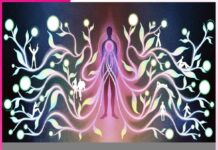How Natural Medicine Becomes Drug?
Introduction: Natural medicines, derived from plants, minerals, and animals, have been used for thousands of years to treat ailments and promote health. With the increasing interest in integrating natural remedies into modern medicine, understanding the process by which these substances transition from traditional use to officially approved drugs is crucial. This article delves into the journey of natural medicines becoming drugs, exploring the historical context, scientific validation, regulatory pathways, and challenges involved in this complex transformation.
Table of Contents
Historical Context of Natural Medicines
Early Use of Natural Medicines:

Transition to Modern Medicine:
As scientific knowledge advanced, the understanding of medicinal properties shifted from mystical beliefs to empirical evidence. The 19th and early 20th centuries saw the isolation and identification of active compounds from natural sources, such as quinine from the cinchona tree for malaria and morphine from the opium poppy for pain relief. These discoveries marked the beginning of integrating natural substances into modern pharmacology.
From Traditional Use to Scientific Investigation
Ethno botany and Ethno pharmacology:
The process of transitioning natural medicines to drugs often begins with ethnobotany and ethnopharmacology. Ethno botanists study how different cultures use plants and other natural substances for medicinal purposes. By documenting traditional knowledge, researchers identify potential candidates for scientific investigation. Ethnopharmacology further explores the pharmacological properties of these substances, aiming to understand their mechanisms of action.
Phyto chemical Research:
Phyto chemistry is the branch of science concerned with the chemical compounds found in plants. Researchers isolate and characterize these compounds to identify those with potential therapeutic effects. Techniques such as chromatography, spectroscopy, and mass spectrometry are employed to analyze the chemical composition of natural substances. This step is crucial for determining the active ingredients and their potential efficacy.
Preclinical Studies:
Once a promising compound is identified, preclinical studies are conducted to evaluate its safety and efficacy. These studies are performed in vitro (in the lab) and in vivo (in animal models) to assess the compound’s biological activity, toxicity, and pharmacokinetics. Preclinical research provides preliminary data on how the compound behaves in living organisms and helps determine whether it warrants further investigation in humans.
Clinical Development and Trials
Clinical Trial Phases:
If preclinical studies yield positive results, the compound proceeds to clinical trials. Clinical trials are conducted in phases, each with specific objectives:
- The initial phase involves a small number of healthy volunteers or patients. Researchers look for adverse effects and determine the appropriate dosage. Phase 2 involves a larger group of patients who have the condition the drug aims to treat. The focus is on evaluating the compound’s efficacy and further assessing its safety. In Phase 3, the drug is tested in a larger and more diverse population. Phase 3 trials aim to confirm the drug’s efficacy, monitor side effects, and compare it to existing treatments. Successful completion of Phase 3 trials provides the evidence needed for regulatory approval.
- Phase 4, involves ongoing monitoring of the drug’s long-term effects and effectiveness after it has been approved and is available in the market. This phase helps identify rare or long-term adverse effects that may not have been detected in earlier trials.
Regulatory Approval:
Regulatory agencies, such as the U.S. Food and Drug Administration (FDA), European Medicines Agency (EMA), and other national health authorities, evaluate the data from clinical trials to determine whether a drug should be approved for use. The approval process involves a thorough review of the drug’s safety, efficacy, and quality. If the drug meets the regulatory standards, it is granted approval for use and can be marketed to the public.
Challenges in the Drug Development Process
Scientific and Technical Challenges:
The journey from natural medicine to approved drug involves several scientific and technical challenges. Identifying the active compounds, ensuring consistent quality, and understanding the mechanisms of action are complex tasks. Natural substances often contain multiple compounds that may interact in unpredictable ways.
Regulatory Hurdles:
Regulatory requirements for drug approval are stringent and can vary from country to country. Navigating the regulatory landscape involves extensive documentation, adherence to guidelines, and often significant financial investment. Different regions may have varying standards for clinical trials, safety assessments, and quality control, adding complexity to the approval process.
Economic and Commercial Considerations:
The drug development process is costly and time-consuming, often requiring years of research and millions of dollars. Pharmaceutical companies invest heavily in clinical trials and regulatory approvals, and the financial risk can be significant. The potential for commercial success influences the decision to pursue the development of a natural medicine, and the return on investment must justify the costs involved.
Examples of Natural Medicines That Became Drugs
Aspirin:
Aspirin, one of the most widely used medications, has its origins in natural medicine. Derived from the bark of the willow tree, which contains salicylic acid, aspirin was used historically to relieve pain and reduce fever. The modern form of aspirin was developed in the late 19th century by Bayer chemist Felix Hoffmann, who synthesized acetylsalicylic acid.
Quinine:
Quinine, extracted from the bark of the cinchona tree, has been used for centuries to treat malaria. The isolation and purification of quinine in the 19th century allowed for its development into a standardized pharmaceutical treatment.
Artemisinin:
Artemisinin, derived from the sweet wormwood plant (Artemisia annua), is a key treatment for malaria. Traditional Chinese medicine used this plant for centuries, but its active compound was only isolated and studied in the 1970s by Chinese scientist. The development of Artemisinin-based Combination Therapies (ACTs) involved extensive research and clinical trials, leading to its widespread use and recognition with the Nobel Prize in Physiology or Medicine in 2015.
The Future of Natural Medicines in Drug Development
Integrating Traditional Knowledge with Modern Science:
Integrating traditional knowledge with modern scientific methods holds great promise for drug development. Collaboration between ethnobotanists, pharmacologists, and traditional healers can lead to the discovery of novel compounds and therapeutic approaches. Respecting and preserving traditional knowledge while applying rigorous scientific methods can enhance the development of new medicines.
Personalized Medicine and Natural Products:
The future of medicine increasingly focuses on personalized approaches, tailoring treatments to individual genetic profiles and specific health conditions. Natural products may play a role in personalized medicine by offering targeted therapies based on individual responses to natural compounds. Research into genetic and biochemical interactions with natural medicines can help optimize their use and efficacy.
Ethical Considerations and Sustainability:
As natural medicines become drugs, ethical considerations related to sustainability, biodiversity, and the protection of indigenous knowledge are crucial. Ensuring that the development and commercialization of natural products are conducted responsibly and with respect for local communities and ecosystems is essential for maintaining ethical standards and promoting long-term sustainability.
Conclusion
The transformation of natural medicines into approved drugs is a multifaceted process that blends historical knowledge with modern scientific research and regulatory scrutiny. From ethnobotanical discoveries to rigorous clinical trials, the journey of natural substances becoming drugs involves overcoming scientific, regulatory, and economic challenges.
As technology advances and our understanding of natural compounds deepens, the potential for integrating natural medicines into modern therapeutics continues to grow. By respecting traditional knowledge, embracing scientific innovation, and addressing ethical considerations, the future of natural medicines in drug development promises to contribute significantly to global health and well-being.Top of Form
Bottom of Form













































